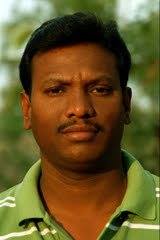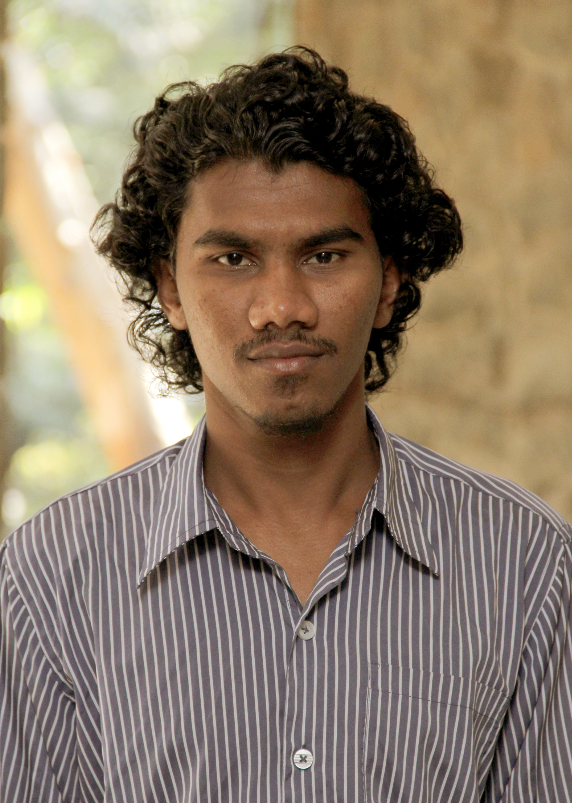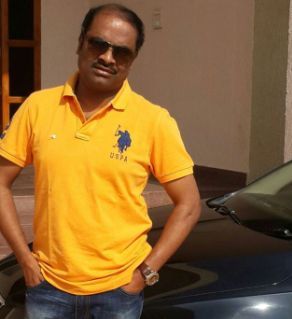J.V. Pawar
The creation and the production of the literature has always been at the heart of the larger Dalit movement. Dalit Literature has its origin in the anti-caste movement started by Dr. Babasaheb Ambedkar; hence it is often called the Ambedkarite Movement. J. V. Pawar, being one of the founding members of the revolutionary anti-caste movement, Dalit Panthers, in Maharashtra, is a well known literary figure in Maharashtra. However, more than a writer or a literary person, J.V. Pawar prefers to call himself an activist of the movement, an activist who has always been ready to take to the streets if necessary and fight for the rights of the people, fight against injustice imposed upon masses in this caste-society. His own identification of himself as an activist more than a literary figure or a writer or a poet, has over the period shaped his interpretations, his outlook about narrating the story of the Ambedkarite Movement, the movement with which he has been associated since he was just adolescence. He is around 73 years old now.

Being the writer of more than 40 books about Ambedkarite/Dalit Movement, his unique contribution in the world of literature is his five volumes project of ‘Ambedkarite Movement after Ambedkar’ in which he depicted events, conflicts, triumphs of the Ambedkarite world in Maharashtra which are otherwise not known to many people. His writing is in Marathi. His narration about small events took place within the anti-caste movement in Maharashtra is something which is very unique in his books. This is his first volume which is translated by Yogesh Maitreya in English and published by Panther’s Paw Publication. The publisher’s objective behind translating and publishing such narrative is to inform and tell the people the story of Ambedkarites, Dalits, and Buddhists , their movement and their struggle written by no one but themselves.
English readers of literature on Ambedkar or anti-caste struggle are very much familiar with the narrations of Brahmins who had never been the part of any such movement. English readers of literature on Ambedkar or anti-caste struggles are thus confined to know about Dalits or their movement from Brahmins or Brahminical agencies. In this process, Dalits’ narrative about their own history, their struggle, their triumph has always been neglected and needless to say that such phenomena gave rise to creation of prejudices upheld by the Brahminical classes about Ambedkarite masses. This book is an attempt to introduce original and authentic voices from Dalit/Ambedkarite world to the readership of English language who are interested and want to know more about the Ambedkarite movement, the struggle of Dalits and their strength, and their triumphs too.
Excerpts from the book
From the Introduction
J.V. Pawar writes, “Babasaheb died on 6th December, 1956. In many ways, his death was accidental and untimely. Hence, so many of his writings were remain unpublished; so many of his books were just lying, waiting to be published. But on the other side, few minor conflicts had taken place within Babasaheb Ambedkar’s family after his death.
These conflicts had reached to the threshold of the court. This had led the government to have the custody of Babasaheb’s writings and books. Since the ‘joint permission’ of Babasaheb’s second wife Maisaheb Ambedkar and his son Bhaiyyasaheb Ambedkar seemed unable to acquire, the entire unpublished literature of Babasaheb had remained into the custody of ‘Court Receiver’ of Maharashtra government. Maisaheb and Bhaiyyasaheb seemed to have troublesome communication between them. It was the difficult task to get them together, convince them and acquire ‘joint permission’. In the year of 1975, at first, I met Maisaheb Ambedkar at the house of D.D. Bawiskar; Raja Dhale was also present in this meeting. After this meeting, my visits to Maisaheb grew frequent with the purpose to sort out the issue with Babasaheb’s unpublished writings. I have a great respect for her. I wanted to convince her and seek her permission so that Babasaheb’s unpublished writings could be published soon. Two years after, in the year of 1977 I met Bhaiyyasaheb Ambedkar. Then, many of his associates had left him; he was almost alone. Later, when he was contesting the election on the sole question/agenda of ‘reservation for Buddhists’, me and Raja Dhale supported him.

Looking at my work and participation in the movement, Bhaiyyasaheb made me the general secretary of The Buddhist Society of India. By now, I had established a good rapport and acquaintance with Maisaheb as well as Bhaiyyasaheb. This connection had brought some fruit. Maisaheb later had started campaigning for Bhaiyyasaheb during elections, who, otherwise was stood in opposite to him in the court. I thought it was the best time. I started convincing both of them that it was necessary to have Babasaheb’s unpublished writings published. It was the property of the society. After all these exhausting efforts, both of them got convinced and I asked advocate Bansod from Nagpur to draft a joint memorandum. Since this memorandum had Maisaheb’s (wife) and Bhaiyyasaheb’s (son) agreement with their signatures on it, the path to publish Babasaheb’s unpublished writings, which so far kept inside the trunks, became clear. Meanwhile we (Dalit Panthers) were trying to get these writings published through other means.”
From the chapter Mahaparinirvana
Babasaheb had arrived in Bombay, but not walking on his feet nor by taking a support of a cane and stepping forward; he came, but not alive. A noble man, who had pour life into millions of souls, wasn’t alive anymore. He was sleeping, covered by the quilt of flowers. Babasaheb came to Bombay ten days earlier than what had been decided, but came dead. Babasaheb’s dead body was now kept over funeral pyre of sandalwood. The body covered with flowers, was going to exist for few hours now. All of the main colleagues of Babasaheb, leaders of political parties, thinkers, journalists, teachers etc. and masses stood there, placidly. Everywhere, there was an intense silence. Meanwhile, Bhaurao Krishnrao Gaikwad – For masses, he was Dadasaheb Gaikwad – stood up. He gazed around: the ocean of people seemed silent, but it wasn’t; it was uneasy inside. Eyes were weeping. He spoke, arduously
From the chapter Presidium Committee
Sometime back when Babasaheb was alive, he had dismissed N. Shivraj from the post of president of Schedule Caste Federation. This must have made him hold the grudge against it. N. Shivraj was highly educated person. He shouldn’t have held his anger against Babasaheb after his death. N. Shivraj did not participated in the funeral procession of Babasaheb as well. He also did not attend the public condolence meeting. None of the leaders from the meeting felt bad for it. None of leaders in that meeting bothered to take any notice of his absence. Had he attended the meeting, he would have been respected by all. Thus, it gave rise to the time in which personal clashes started to overpower the collective concerns.
From the chapter Provisions for Buddhists
A year after 1956, a question of concession or provisions for Buddhists became prominent. Once Babasaheb proclaimed, ‘I will preach Buddhism across India’. But the government of Bombay (Maharashtra) then wasn’t appear much cordial with Buddhist population, not even Nehru who was convinced with Panchshila and seemed unable to digest the idea of Buddhist India. Hence, the government had immediately introduced 63rd amendment into constitution on 2nd October, 1956. While amending the 341st article, it was said, “Notwithstanding anything contained in paragraph no.2, no person who professes a religion different from Hindu or Sikh religion shall deem to be a member of Schedule Caste”. According to this, to be a Schedule Caste, it was mandatory to be either Hindu or Sikh; if a person converted to Buddhism, he will not be considered as Schedule Caste or his ‘caste’ shall not be incorporated into the Schedule of Schedule Caste. Hence, this schedule wouldn’t fetch benefits to them. While embracing Buddhism, Babasaheb suggested that provision can be sought anytime; but now government answered him quite negatively through their attitude towards Buddhists 137 and Buddhism. This fact notes that provisions or concessions were rejected to Buddhists from 29th October, 1956. On the other hand, people who were rational, considering the financial situation and background of newly converted Buddhists, were in favour of Buddhists and provision of concessions for them in social life. But this wasn’t acceptable to the government. Therefore, the question of concessions for Buddhists was very prominent and became intense even when Babasaheb was alive. With his untimely death, it became more and more intense and complex. Meanwhile, because of Babasaheb’s Schedule Caste Federation (SCF), Congress had to face historical loss in the politics of Maharashtra in 1957. It was true that by the minutest margin, Congress had retained its dynastic reign; however along with Yashwantrao Chavan, all of the leaders of Congress were treating Buddhists as second citizens.
Translated by Yogesh Maitreya
~
Please spread the word about the book, buy and help us grow. To buy the book, please visit this link: http://www.amazon.in/Ambedkarite-Movement-After-Ambedkar-Pawar/dp/819329050X
~~~
Yogesh Maitreya is a poet and translator. He is currently pursuing M.Phil at TISS, Mumbai.










